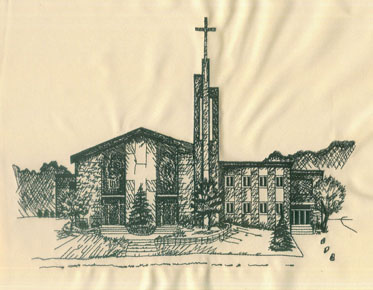Mastering Precision: Understanding the Requirements for Custom Digitizing in Embroidery
Embroidery has evolved into a sophisticated art form, with custom digitizing playing a pivotal role in bringing intricate designs to life on fabric. Whether you're an individual seeking personalized embroidery or a business looking to enhance your brand through bespoke logos, understanding the requirements for custom digitizing is crucial for achieving impeccable results. In this blog, we will delve into the intricacies of custom digitizing, exploring the key elements that contribute to the creation of flawless embroidered designs.
1. Artwork or Design File: The
Blueprint of Custom Digitizing
The journey of
custom digitizing begins with a clear and detailed design file or artwork. This
file serves as the blueprint for the digitizer, guiding them in translating the
visual elements into a language that embroidery machines can comprehend. The
better the quality and clarity of the artwork, the more accurate and vibrant the
embroidered result will be.
Key Considerations:
● File Format: Provide the design file in a vector format like AI, EPS, or SVG for
optimal scalability and clarity.
● Resolution: Higher resolution ensures intricate details are preserved. Aim for at
least 300 DPI (dots per inch).
● Color Information: Clearly specify the colors used in the design, whether through Pantone
codes or a detailed color description.
● Complexity: Communicate the level of detail required and any specific effects, such as gradients or shading.
2. Size and Placement:
Determining the Dimensions of Excellence
The size and placement
of the embroidered design are critical factors that impact the overall
aesthetics and visibility. Custom digitizing takes into account the dimensions
of the final product, ensuring that the design fits seamlessly within the
chosen area. Whether it's a small logo on a polo shirt or an intricate pattern
on a jacket back, understanding the size and placement requirements is vital.
Key Considerations:
● Dimensions: Clearly specify the desired width and height of the embroidered design.
● Placement: Indicate the preferred location on the garment or item. Common
placements include chest, sleeve, back, or cap.
● Proportion: Maintain the aspect ratio of the original design to prevent distortion.
3. Fabric and Material: Adapting
to the Texture of Excellence
Different fabrics
and materials behave uniquely when subjected to embroidery. Custom digitizing
takes into account the characteristics of the chosen fabric to optimize the
design for a flawless outcome. Whether it's a smooth cotton blend, textured
denim, or delicate silk, the digitizer adjusts parameters to ensure the design
complements the material.
Key Considerations:
● Fabric Type: Specify the type of fabric, considering factors like thickness,
stretchability, and texture.
● Thread Density: Adjust the stitch density to suit the fabric. Higher density may be
required for denser fabrics.
● Backing and Stabilizers: Communicate if special backing or stabilizers are needed, especially for lightweight or stretchy fabrics.
4. Stitch Type and Direction:
Crafting Texture with Precision
Custom digitizing
involves choosing the right stitch types and directions to accurately convey
the texture and details of the design. From satin stitches for smooth surfaces
to fill stitches for larger areas, the digitizer employs a variety of
techniques to achieve the desired visual and tactile effects.
Key
Considerations:
● Satin vs. Fill Stitches: Specify where satin stitches for a smooth surface or fill stitches for
coverage are appropriate.
● Stitch Direction: Determine the direction of stitches to enhance texture and visual
appeal.
● Underlay Stitches: Consider the use of underlay stitches to provide a stable foundation and prevent fabric distortion.
5. Lettering and Typography:
Conveying Messages with Elegance
Incorporating text
into an embroidered design requires special attention to ensure legibility and
aesthetic appeal. Whether it's a brand name, slogan, or personalized message,
the digitizer carefully selects fonts, adjusts letter spacing, and considers
the size to create crisp and readable text.
Key
Considerations:
● Font Selection: Choose a font that aligns with the brand or design theme.
● Letter Spacing: Adjust the spacing between letters for clarity and visual balance.
● Size: Determine the appropriate size to maintain readability, especially for small text.
6. Complexity and Stitch Count:
Balancing Detail and Efficiency
Balancing the
intricacy of the design with the efficiency of the embroidery process is a
crucial aspect of custom digitizing. Complex designs with a high stitch count
may require more time and resources, impacting the overall cost and production
time. Communicating the desired level of detail helps in striking the right
balance.
Key
Considerations:
● Level of Detail: Clearly express the desired level of detail, especially for intricate
designs.
● Stitch Count: Be mindful of the stitch count, as higher counts may affect production
time and cost.
● Budget and Time Constraints: If applicable, communicate any constraints regarding budget or time.
7. Machine Compatibility:
Optimizing for Embroidery Machinery
Different embroidery
machines have varying capabilities and requirements. Custom digitizing involves
optimizing the design for the specific embroidery machine that will bring it to
life. Understanding the machine's limitations and capabilities ensures seamless
execution and impeccable results.
Key
Considerations:
● File Format Compatibility: Ensure the design file is compatible with the embroidery machine's
format.
● Machine Specifications: Consider the maximum stitch count and hoop size supported by the
machine.
● Thread Color Availability: Check the availability of thread colors in the machine's repertoire.
Conclusion: Elevating Embroidery
with Custom Digitizing Excellence
In the realm of embroidery, custom digitizing stands as the bridge
between imagination and reality. By understanding and communicating the
specific requirements outlined above, you empower digitizers to transform
designs into stunning embroidered creations. Whether it's a logo that
represents a brand or an intricately digitized piece of art, the precision and
attention to detail in custom digitizing elevate embroidery from a craft to a
form of visual storytelling. Embrace the world of custom digitizing, and
witness your designs come to life with the finesse and elegance they deserve.



